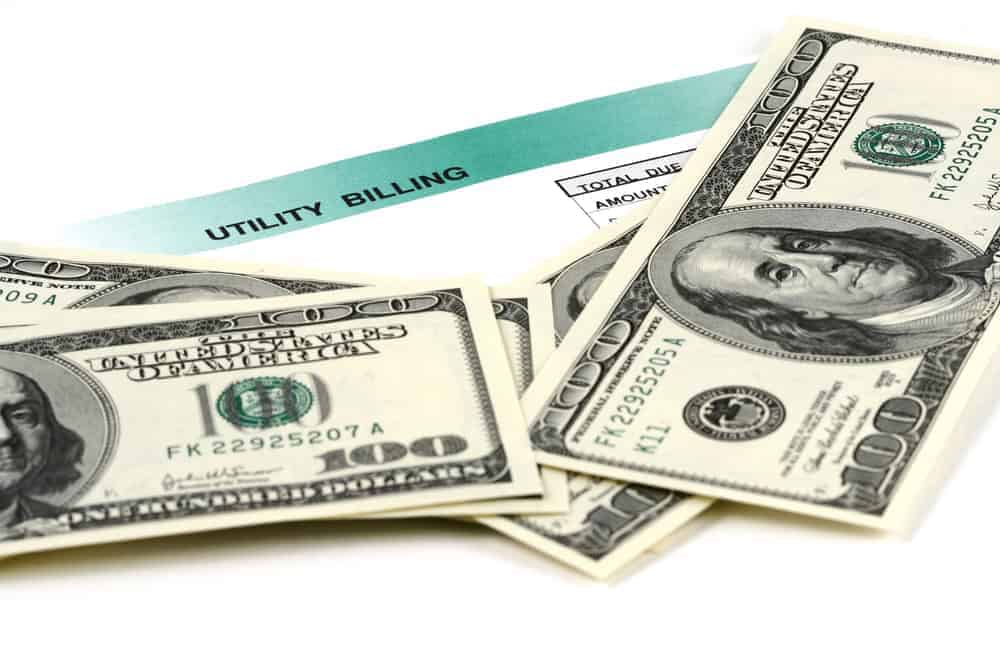You don’t want to flush money down the drain. So, how much does a running toilet increase your water bill?
Ever wonder how much does a running toilet increase your water bill? Before you run off and blame a growing water bill on your washing machine, you may want to take a look at your commode. Depending on the type of toilet you own, each flush should use between 1.6-3.6 gallons. On a typical day, a person flushes about five times.
Multiply that by how many people live in your household to determine how much water you normally use by going number one or number two!
A running toilet, however, only adds to that total. Unless you address what’s causing the leak, you’ll keep paying the water department more and more each month. Let’s figure out how much of your hard-earned cash you’re really flushing down the toilet.
How to Determine If You Have a Toilet Leak
A running toilet is the biggest giveaway that there is a leak hiding somewhere. However, many people don’t realize their toilet is running because it eventually stops on its own. Other toilets may run spontaneously in the middle of the night when no one is awake to notice.
Because toilet leaks are so tricky to spot, many homeowners are oblivious that they even have one. Instead, they scratch their heads each month, wondering why their water bill is so high. They may try taking shorter showers or doing fewer loads of laundry, all to no avail. The toilet is the last thing on their minds.
Luckily, there is a cheap and easy way to determine if you have a leak lurking in your commode. All it takes is some food coloring and a few minutes of your time. Open the tank of your toilet and add a few drops of the food coloring. Set a timer for 30 minutes, and be sure you don’t flush.
When the timer goes off, take a look inside the bowl. If you notice colored water in the bowl, you have a leak on your hands. Now all you have to do is fix it, and your water bill will go back down.

Stop a Leaking Toilet in Its Tracks
Nearly everyone has experienced a running toilet at one point or another. You may even remember your mother telling you to “jiggle the handle.” While that does work momentarily, it doesn’t resolve the underlying problem. To do that, you need to understand how a toilet works.
There are two main parts of a toilet—the bowl and the tank. Whenever you do your business, you sit on the bowl. The tank serves as a reservoir of fresh water to facilitate the flush. Toilets work because of gravity. Remember, what goes up must come down. Pushing the handle releases water from the tank into the bowl. As the water level rises, gravity pushes it back down through the pipes.
After flushing, the plumbing system fills the tank and bowl back up with more water. Once both parts reach capacity, the toilet stops running. But, if there’s a water leak, the toilet will continue to run nonstop. To fix a running toilet, you must find the source of the leak.
Where Could that Leak Be?
In most instances, a worn-out flapper is the culprit. The flapper is the device inside the tank that closes the hole leading to the bowl. Under normal circumstances, the flapper creates a tight seal. However, flappers can and do wear out. If the flapper becomes corroded, torn, or warped, it can longer do its job, and your toilet will run.
If the flapper looks to be in working condition, then take a look at the chain. This device connects the flapper to the flush handle. Sometimes, the chain becomes detached. When this happens, you can usually reconnect it without hassle. In other instances, the chain is too long and gets stuck under the flapper. Move the hook to another level of the chain to shorten it.
Other times, you can trace all your woes back to the float arm and float ball. As water refills the tank, the float ball rises. When it reaches the desired level, the toilet stops running. However, if the ball isn’t high enough, the toilet will keep running. Bending the float arm will help the ball rise to the right spot.
Water Wasted Is Money Wasted
Toilet leaks are not a one-size-fits-all problem. Some leaks are minor, while others lose even more water. But you should know that most running toilets use more water than shower leaks. It only takes about 30 seconds for a leaking commode to waste a gallon of water!
But what does that mean for your wallet? The average family loses 11-percent of their water to leaks. Considering you pay by the gallon, every bit of water you use means less money in your pocketbook. A medium-sized leak consumes about 250 gallons of water per day—about 7,500 a month! Depending on your current water rate, you could end up spending an additional $1,200 a year on wasted water you never really used.
Imagine all the other ways you could have spent that money instead. Now, those numbers only apply to a single scenario. Your leak could be better or worse than the example, but it’s hard to know until you receive a jaw-dropping water bill in the mail. Either way, you’ll end up parting with a significant amount of cash.
Trust Your Leaking Toilet with Plumbing Professionals
Jiggling the handle won’t cut it any longer. A minor toilet leak will only continue to get worse until you resolve the issue. Plumbers handle toilet leaks of all sizes. During a service call, a plumber will inspect the different components of your commode to determine the problem. Once your toilet stops running, your water bill will return to normal.
Toilets are one of our many plumbing specialties here at Anthony Wimpey Plumbing. With more than three decades of experience, there’s no leak too big for our team to repair. Our plumbers take pride in providing top-notch service and reliable work at all times. We will arrive on time, ready to get started.
How much does a running toilet increase your water bill? Reach out to Anthony Wimpey Plumbing to schedule toilet repair before another high water bill catches you by surprise.
